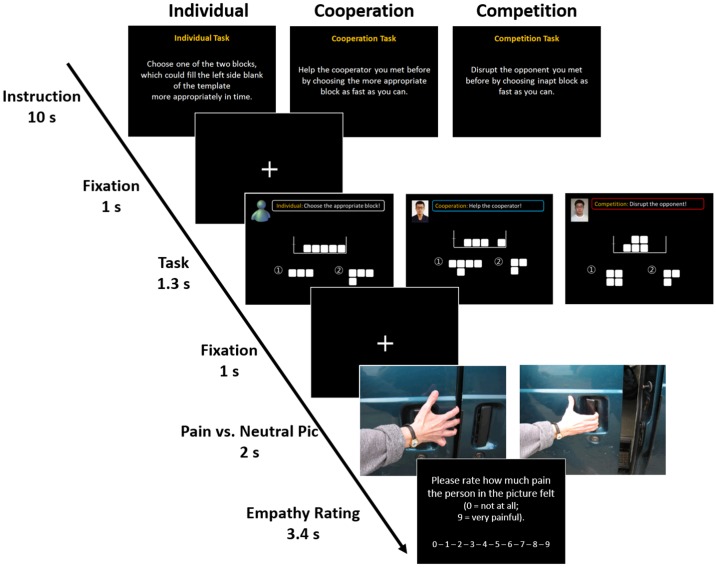FIGURE 1.
Experimental design. The game consisted of three sessions representing different social contexts: individual, cooperative, and competitive contexts. The task asked the participants to choose between two different blocks according to the instruction for each trial within the allotted time (1.3 s). Each trial was independent of the others, so the participants did not need to remember or memorize their previous trials. In the individual task, participants were instructed to choose one of two blocks which could correctly fill the space on the left side of the template. In the cooperative task, participants were instructed to help a cooperator by choosing the more appropriate block as fast as they could. In the competitive task, they were asked to choose the ill-fitting block to interfere with their opponent’s task performance. While performing the task, 25 empathy-evoking stimuli and 10 neutral stimuli were randomly presented in order to make participants empathize with the person in the picture. Each picture was presented for 2 s and participants were asked to rate how much pain the person in the picture felt on a 10-point Likert scale within 3.4 s.

